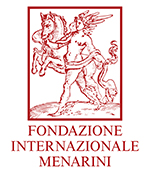
Press release
The relationship between food and drugs, between nutraceutics and prevention
Turin, 10 July 2014 - The interaction between drugs and food has long been known, and yet it is an aspect that receives little attention and is often underestimated, while the resulting symptoms are at times interpreted as side effects of the drug. Moreover, food and beverages may not only alter the absorption of drugs, but may also interfere directly with the biochemical mechanisms, thus reducing a drug’s efficacy or increasing its toxicity.
These are the main topics discussed at the conference “Food: a drug between the drugs”, organised in Turin by the Department of Drug Science and Technology of the University of Turin and by theFondazione Internazionale Menarini.
“There can be various situations in which a food interferes with the activity of a drug,” explains Fulvia Pedani, G.S.U.,Day Hospital Coordination, Dept Medical Oncology 2 at the “Città della Salute e della Scienza” University Hospital, and Scientific Director of the conference. “For example, foods rich in vitamin K, such as certain vegetables (broccoli, cabbage, spinach, white beans, savoy cabbage, lentils), can reduce the therapeutic response of oral anticoagulants, tannin-rich beverages (tea, coffee) reduce the availability of drugs containing iron, high-fibre foods reduce the absorption of calcium, grapefruit juice increases the toxicity of oral hypoglycaemic agents used to treat diabetes. Conversely there are cases where a drug alters the correct absorption of a nutrient: laxatives reduce the absorption of carbohydrates and potassium, antibiotics have an adverse effect on the absorption of various nutrients, such as calcium, magnesium and iron, antacids cause a decrease of the absorption of vitamin B12. Other aspects that should not be neglected are the loss of appetite caused by some drugs or the side effects of some treatments that make it difficult to swallow correctly and hence to eat and take in sufficient nutrients.”
The United States Food and Drug Administration has published a guide concerning the possible interactions between drugs and foods, providing evidence for the greater attention now paid to the problem. The benefits of complementary treatments to control symptoms and increase the effects of drugs have also been officially recognised by the scientific community. Thus at the Meeting of the American Society of Clinical Oncology, one of the most important oncology meetings at a global level, a special session was dedicated to such support therapies.
At the same time, the concept of nutraceutics, that is the use of foods that may have preventive or protective properties, is establishing itself. The identification of the mechanisms at the root of the preventive or protective activities of some foods could in the future lead to the development of new therapeutic substances. Nutraceutics is a field in constant development. It shows a commercial growth of 15-20% annually (compared to 1-2% in the pharmaceutical sector), and according to recent estimates figures comparable to those of the pharmaceutical industry (circa 800 billion dollars annually) could be reached within a decade. Factors such as the patients’ appreciation, improved technologies for the production of nutraceuticals and, unfortunately, the fairly limited development of novelties in the drug sector all contribute to this growth.
“In the past few years, the idea that a healthy diet, potentially supplemented with nutraceutical compounds, can help the body maintain its normal physiological conditions has increasingly become established,” confirms Giancarlo Cravotto, Director of the Department of Drug Science and Technology of the University of Turin and Chairman of the conference. “A topic particularly discussed is chemoprevention, that is the strategy of cancer prevention based on a diet rich in specific natural bioactive substances. Epidemiological and preclinical evidence has shown the antioxidant and chemopreventive effects of various products and extracts of plant origin. Among these we find the vast range of polyphenols, such as epigallocatechin gallate abundantly present in green tea, proanthocyanidins and resveratrol of theVitis viniferapresent in red wine. The Mediterranean diet, in which olive oil and tomatoes play a central part, has been associated with a smaller incidence of cardiovascular risk and tumours. The beneficial effect of olive oil has been attributed mainly to oleuropein and its metabolites hydroxytyrosol and tyrosol. Lycopene, which is typically extracted from the skin of tomatoes, is known even better. Many studies concerning chemopreventive activity have been carried out on the isoflavones of soybeans (genistein), on cruciferous vegetables such as cabbage and broccoli, on the curcumin present inCurcuma longaL., and also on citrus fruits, berries and ginger.”